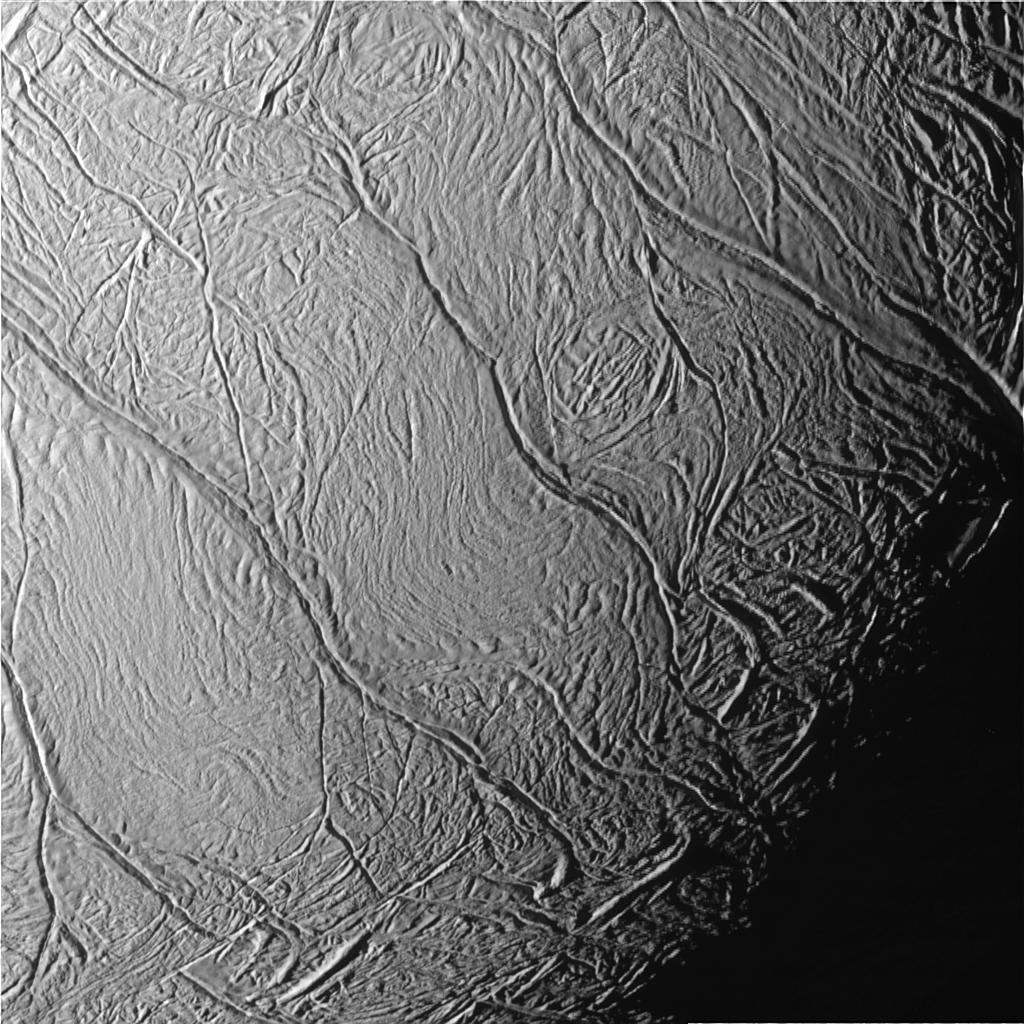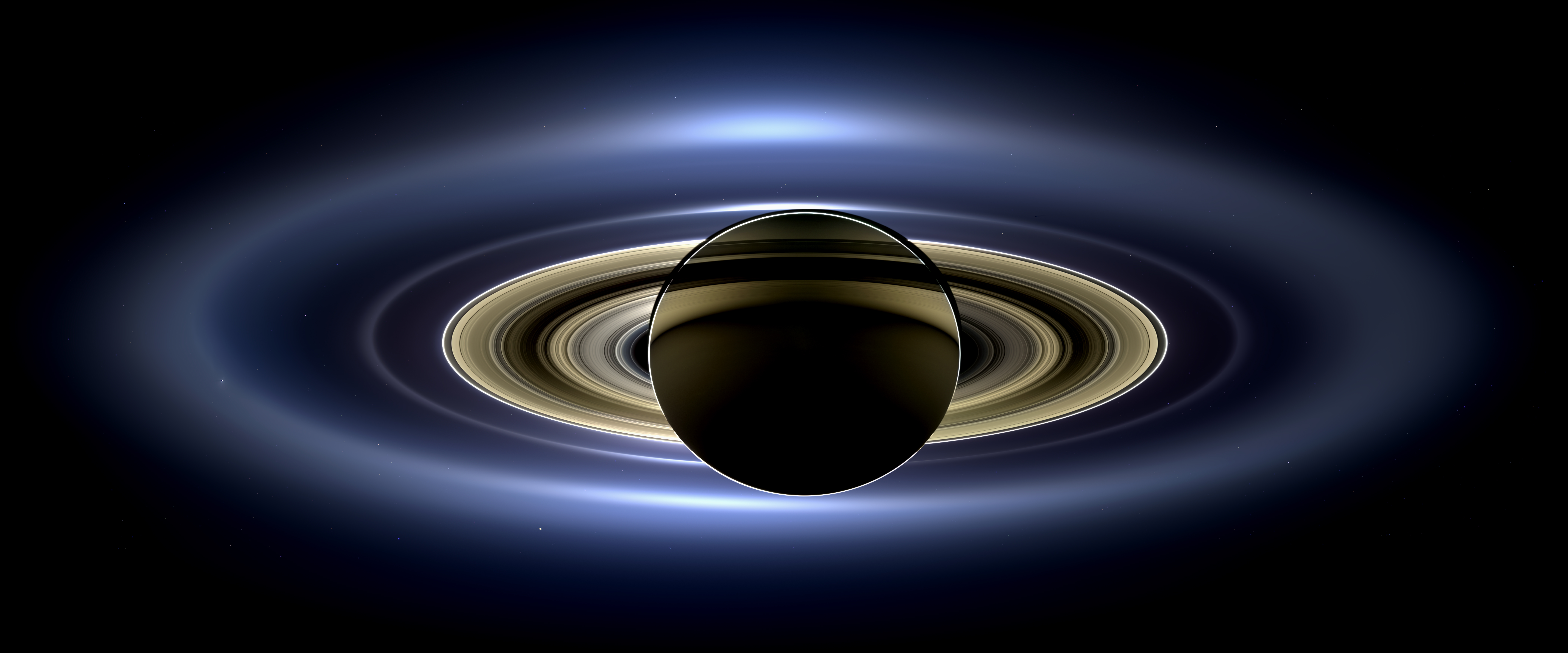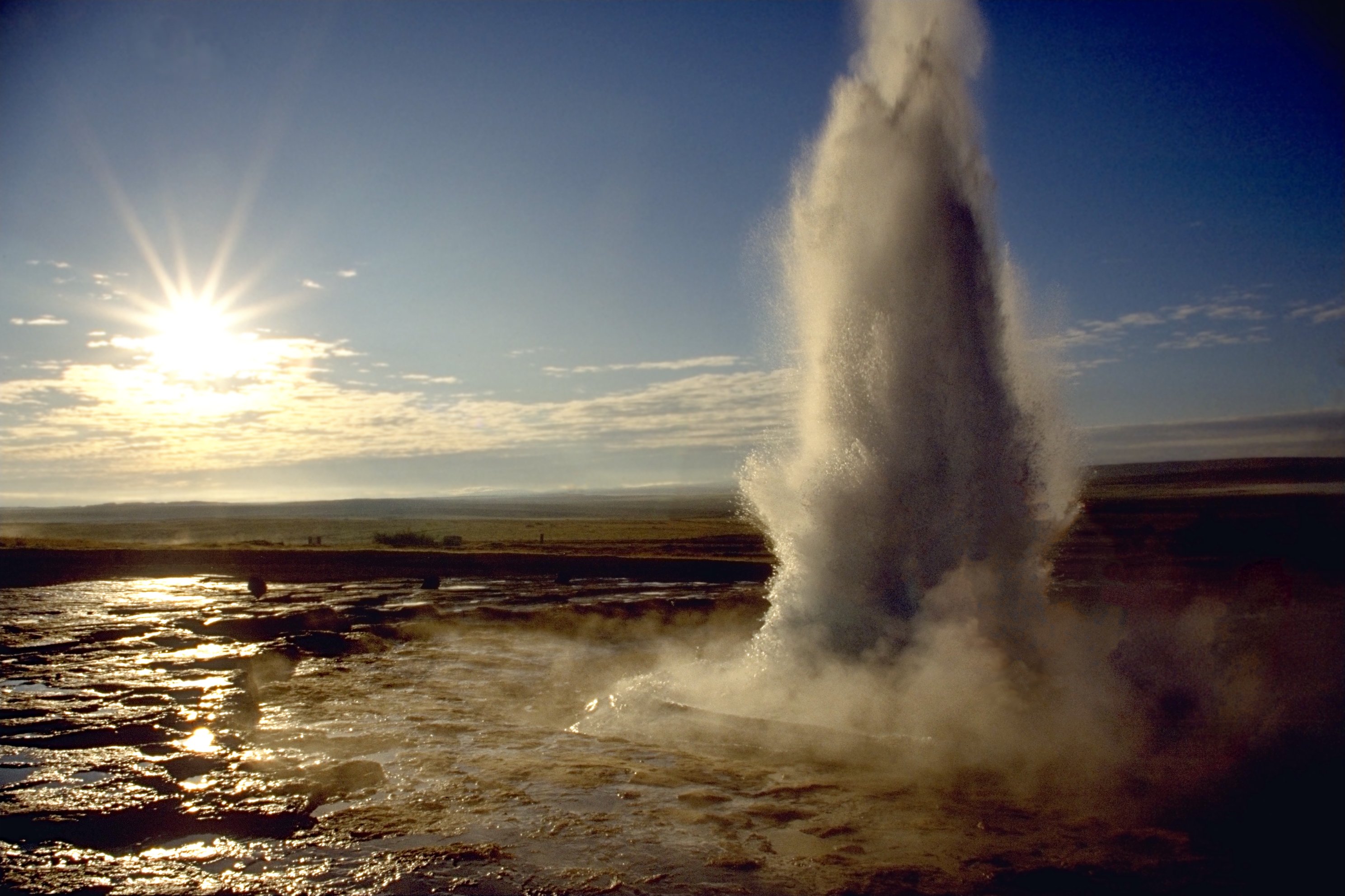|
Tiger Stripes (Enceladus)
The tiger stripes of Enceladus consist of four sub-parallel, linear depressions in the south polar region of the Saturnian moon. First observed on May 20, 2005 by the ''Cassini'' spacecraft's Imaging Science Sub-system (ISS) camera (though seen obliquely during an early flyby), the features are most notable in lower resolution images by their brightness contrast from the surrounding terrain. Higher resolution observations were obtained by Cassini's various instruments during a close flyby of Enceladus on July 14, 2005. These observations revealed the tiger stripes to be low ridges with a central fracture. Observations from the Composite Infrared Spectrometer (CIRS) instrument showed the tiger stripes to have elevated surface temperatures, indicative of present-day cryovolcanism on Enceladus centered on the tiger stripes. Names The name tiger stripes is an unofficial term given to these four features based on their distinctive albedo. Enceladean ''sulci'' (subparallel furrows ... [...More Info...] [...Related Items...] OR: [Wikipedia] [Google] [Baidu] |
Enceladus Tiger Stripes Up Close PIA06247
Enceladus is the sixth-largest moon of Saturn (19th largest in the Solar System). It is about in diameter, about a tenth of that of Saturn's largest moon, Titan. Enceladus is mostly covered by fresh, clean ice, making it one of the most reflective bodies of the Solar System. Consequently, its surface temperature at noon only reaches , far colder than a light-absorbing body would be. Despite its small size, Enceladus has a wide range of surface features, ranging from old, heavily cratered regions to young, tectonically deformed terrain. Enceladus was discovered on August 28, 1789, by William Herschel, but little was known about it until the two Voyager spacecraft, '' Voyager 1'' and '' Voyager 2'', flew by Saturn in 1980 and 1981. In 2005, the spacecraft '' Cassini'' started multiple close flybys of Enceladus, revealing its surface and environment in greater detail. In particular, ''Cassini'' discovered water-rich plumes venting from the south polar region. Cryo ... [...More Info...] [...Related Items...] OR: [Wikipedia] [Google] [Baidu] |
Carbon Dioxide
Carbon dioxide (chemical formula ) is a chemical compound made up of molecules that each have one carbon atom covalently double bonded to two oxygen atoms. It is found in the gas state at room temperature. In the air, carbon dioxide is transparent to visible light but absorbs infrared radiation, acting as a greenhouse gas. It is a trace gas in Earth's atmosphere at 421 parts per million (ppm), or about 0.04% by volume (as of May 2022), having risen from pre-industrial levels of 280 ppm. Burning fossil fuels is the primary cause of these increased CO2 concentrations and also the primary cause of climate change.IPCC (2022Summary for policy makersiClimate Change 2022: Mitigation of Climate Change. Contribution of Working Group III to the Sixth Assessment Report of the Intergovernmental Panel on Climate Change Cambridge University Press, Cambridge, United Kingdom and New York, NY, USA Carbon dioxide is soluble in water and is found in groundwater, lakes, ice caps, ... [...More Info...] [...Related Items...] OR: [Wikipedia] [Google] [Baidu] |
Titan (moon)
Titan is the largest moon of Saturn and the second-largest natural satellite in the Solar System. It is the only moon known to have a dense atmosphere, and is the only known object in space other than Earth on which clear evidence of stable bodies of surface liquid has been found. Titan is one of the seven gravitationally rounded moons in orbit around Saturn, and the second most distant from Saturn of those seven. Frequently described as a planet-like moon, Titan is 50% larger (in diameter) than Earth's Moon and 80% more massive. It is the second-largest moon in the Solar System after Jupiter's moon Ganymede, and is larger than the planet Mercury, but only 40% as massive. Discovered in 1655 by the Dutch astronomer Christiaan Huygens, Titan was the first known moon of Saturn, and the sixth known planetary satellite (after Earth's moon and the four Galilean moons of Jupiter). Titan orbits Saturn at 20 Saturn radii. From Titan's surface, Saturn subtends an arc of 5.09 ... [...More Info...] [...Related Items...] OR: [Wikipedia] [Google] [Baidu] |
Mimas (moon)
Mimas , also designated Saturn I, is a moon of Saturn discovered in 1789 by William Herschel. It is named after Mimas, a son of Gaia in Greek mythology. With a diameter of , it is the smallest astronomical body that is known to still be rounded in shape because of self-gravitation. However, Mimas is not actually in hydrostatic equilibrium for its current rotation. Discovery Mimas was discovered by the astronomer William Herschel on 17 September 1789. He recorded his discovery as follows: "I continued my observations constantly, whenever the weather would permit; and the great light of the forty-feet speculum was now of so much use, that I also, on the 17th of September, detected the seventh satellite, when it was at its greatest preceding elongation." The 40-foot telescope was a metal mirror reflecting telescope built by Herschel, with a aperture. The 40 feet refers to the length of the focus, not the aperture diameter as more common with modern telescopes. Name Mima ... [...More Info...] [...Related Items...] OR: [Wikipedia] [Google] [Baidu] |
Phoebe Ring
The rings of Saturn are the most extensive ring system of any planet in the Solar System. They consist of countless small particles, ranging in size from micrometers to meters, that orbit around Saturn. The ring particles are made almost entirely of water ice, with a trace component of rocky material. There is still no consensus as to their mechanism of formation. Although theoretical models indicated that the rings were likely to have formed early in the Solar System's history, newer data from '' Cassini'' suggested they formed relatively late. Although reflection from the rings increases Saturn's brightness, they are not visible from Earth with unaided vision. In 1610, the year after Galileo Galilei turned a telescope to the sky, he became the first person to observe Saturn's rings, though he could not see them well enough to discern their true nature. In 1655, Christiaan Huygens was the first person to describe them as a disk surrounding Saturn. The concept that Saturn's rin ... [...More Info...] [...Related Items...] OR: [Wikipedia] [Google] [Baidu] |
Rings Of Saturn
The rings of Saturn are the most extensive ring system of any planet in the Solar System. They consist of countless small particles, ranging in size from micrometers to meters, that orbit around Saturn. The ring particles are made almost entirely of water ice, with a trace component of rocky material. There is still no consensus as to their mechanism of formation. Although theoretical models indicated that the rings were likely to have formed early in the Solar System's history, newer data from '' Cassini'' suggested they formed relatively late. Although reflection from the rings increases Saturn's brightness, they are not visible from Earth with unaided vision. In 1610, the year after Galileo Galilei turned a telescope to the sky, he became the first person to observe Saturn's rings, though he could not see them well enough to discern their true nature. In 1655, Christiaan Huygens was the first person to describe them as a disk surrounding Saturn. The concept that Saturn's rin ... [...More Info...] [...Related Items...] OR: [Wikipedia] [Google] [Baidu] |
New Scientist
''New Scientist'' is a magazine covering all aspects of science and technology. Based in London, it publishes weekly English-language editions in the United Kingdom, the United States and Australia. An editorially separate organisation publishes a monthly Dutch-language edition. First published on 22 November 1956, ''New Scientist'' has been available in online form since 1996. Sold in retail outlets (paper edition) and on subscription (paper and/or online), the magazine covers news, features, reviews and commentary on science, technology and their implications. ''New Scientist'' also publishes speculative articles, ranging from the technical to the philosophical. ''New Scientist'' was acquired by Daily Mail and General Trust (DMGT) in March 2021. History Ownership The magazine was founded in 1956 by Tom Margerison, Max Raison and Nicholas Harrison as ''The New Scientist'', with Issue 1 on 22 November 1956, priced at one shilling (a twentieth of a pound in pre-decimal UK cu ... [...More Info...] [...Related Items...] OR: [Wikipedia] [Google] [Baidu] |
Clathrate
A clathrate is a chemical substance consisting of a lattice that traps or contains molecules. The word ''clathrate'' is derived from the Latin (), meaning ‘with bars, latticed’. Most clathrate compounds are polymeric and completely envelop the guest molecule, but in modern usage clathrates also include host–guest complexes and inclusion compounds.Atwood, J. L. (2012) "Inclusion Compounds" in ''Ullmann's Encyclopedia of Industrial Chemistry''. Wiley-VCH, Weinheim. According to IUPAC, clathrates are inclusion compounds "in which the guest molecule is in a cage formed by the host molecule or by a lattice of host molecules." The term refers to many molecular hosts, including calixarenes and cyclodextrins and even some inorganic polymers such as zeolites. Clathrates can be divided into two categories: clathrate hydrates and inorganic clathrates. Each clathrate is made up of a framework and guests that reside the framework. Most common clathrate crystal structures can be compos ... [...More Info...] [...Related Items...] OR: [Wikipedia] [Google] [Baidu] |
Geyser
A geyser (, ) is a spring characterized by an intermittent discharge of water ejected turbulently and accompanied by steam. As a fairly rare phenomenon, the formation of geysers is due to particular hydrogeological conditions that exist only in a few places on Earth. Generally all geyser field sites are located near active volcanic areas, and the geyser effect is due to the proximity of magma. Generally, surface water works its way down to an average depth of around where it contacts hot rocks. The resultant boiling of the pressurized water results in the geyser effect of hot water and steam spraying out of the geyser's surface vent (a hydrothermal explosion). A geyser's eruptive activity may change or cease due to ongoing mineral deposition within the geyser plumbing, exchange of functions with nearby hot springs, earthquake influences, and human intervention. Like many other natural phenomena, geysers are not unique to Earth. Jet-like eruptions, often referred to as cryoge ... [...More Info...] [...Related Items...] OR: [Wikipedia] [Google] [Baidu] |
Nitrogen
Nitrogen is the chemical element with the symbol N and atomic number 7. Nitrogen is a nonmetal and the lightest member of group 15 of the periodic table, often called the pnictogens. It is a common element in the universe, estimated at seventh in total abundance in the Milky Way and the Solar System. At standard temperature and pressure, two atoms of the element bond to form N2, a colorless and odorless diatomic gas. N2 forms about 78% of Earth's atmosphere, making it the most abundant uncombined element. Nitrogen occurs in all organisms, primarily in amino acids (and thus proteins), in the nucleic acids ( DNA and RNA) and in the energy transfer molecule adenosine triphosphate. The human body contains about 3% nitrogen by mass, the fourth most abundant element in the body after oxygen, carbon, and hydrogen. The nitrogen cycle describes the movement of the element from the air, into the biosphere and organic compounds, then back into the atmosphere. Many indus ... [...More Info...] [...Related Items...] OR: [Wikipedia] [Google] [Baidu] |
Methane
Methane ( , ) is a chemical compound with the chemical formula (one carbon atom bonded to four hydrogen atoms). It is a group-14 hydride, the simplest alkane, and the main constituent of natural gas. The relative abundance of methane on Earth makes it an economically attractive fuel, although capturing and storing it poses technical challenges due to its gaseous state under normal conditions for temperature and pressure. Naturally occurring methane is found both below ground and under the seafloor and is formed by both geological and biological processes. The largest reservoir of methane is under the seafloor in the form of methane clathrates. When methane reaches the surface and the atmosphere, it is known as atmospheric methane. The Earth's atmospheric methane concentration has increased by about 150% since 1750, and it accounts for 20% of the total radiative forcing from all of the long-lived and globally mixed greenhouse gases. It has also been detected on other plane ... [...More Info...] [...Related Items...] OR: [Wikipedia] [Google] [Baidu] |
Kelvin
The kelvin, symbol K, is the primary unit of temperature in the International System of Units (SI), used alongside its prefixed forms and the degree Celsius. It is named after the Belfast-born and University of Glasgow-based engineer and physicist William Thomson, 1st Baron Kelvin (1824–1907). The Kelvin scale is an absolute thermodynamic temperature scale, meaning it uses absolute zero as its null (zero) point. Historically, the Kelvin scale was developed by shifting the starting point of the much-older Celsius scale down from the melting point of water to absolute zero, and its increments still closely approximate the historic definition of a degree Celsius, but since 2019 the scale has been defined by fixing the Boltzmann constant to be exactly . Hence, one kelvin is equal to a change in the thermodynamic temperature that results in a change of thermal energy by . The temperature in degree Celsius is now defined as the temperature in kelvins minus 273.15, meaning t ... [...More Info...] [...Related Items...] OR: [Wikipedia] [Google] [Baidu] |









